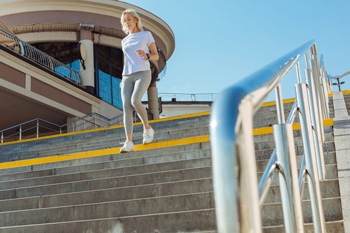How to move - and move more
Author: Linda Sinden Date Posted:12 November 2018

As the days become warmer and sunlight hours longer, do you find yourself naturally wanting to be more active?
Over the past 50 years humanity's pursuit of 'convenience' may have made life much easier, with access to elevators and lifts, automatic car washes, remote controls, home delivery services, internet shopping, electric golf buggies, electric scooters, electric bicycles, restaurant drive-thru's, lawn-mowing services, house-cleaning services, clothes dryers, cordless phones and more.
While all these things make life simpler, easier and save us time, they also cause us to be less active, which has a cost. Access to large quantities of inexpensive calorie dense foods and a life of convenience and ease is the main reason that weight gain and obesity is now an issue.
Incidental exercise makes it easier
Incidental exercise, or the exercise we get doing daily activities, can make a big difference between being overweight and losing or maintaining a healthy body shape. The key to increasing incidental exercise is to replace a few 'convenient' activities each day with something that will cause us to 'move more'. For example, while we are speaking on the phone we could pace up and down the hallway or office. Any exercise, no matter how short, is better than none and that at the end of the day, it all adds up.
Here are some ways to move more this week
- Walk up or down the stairs and leave the escalators and lifts for those who really need them.
- Go for a 10 minute walk during your lunch break. Walk more vigorously prior lunch and more sedately if you have eaten.
- If you bus then get off the bus one stop early and walk a little further to work or home.
- Take the dogs out for a walk, or for an extra walk during the week.
- If you like to watch TV then leave the remote control on top of the TV and get up every time you want to change channels.
- Have a piece of exercise equipment strategically placed in front of your TV and use it while enjoying your favourite program. You may be surprised how much exercise you achieve this way.
- Park your car a little further away from the entrance to the shops you are visiting.
- What else will work for you? Make some up for yourself.
Doing it your way
Ayurveda understands that although exercise can have profound benefits, like everything else, exercise should suit your nature, time of life, the season, time of day and overall strength.
- The Ayurvedic recommendation is that you exercise to 50% of your capacity. This is indicated either when you begin to sweat, or when you need to breathe through your mouth.
- Pushing your body to its limits does strengthen the muscles and has localised benefits but it can cause stress, strain and imbalances in other parts of the body.
- By slowly building up your capacity for more exercise you avoid creating free radicals in the process and then once in shape and feeling fit, you can actually do more daily without accumulating free radicals.
- The principle of exercising to 50% of your capacity produces immediate benefits, as instead of feeling exhausted after exercising, you feel exhilarated and enlivened. This is more likely to make you want to exercise again and because it is not damaging to your physiology, you can comfortably be active most days.
Helpful Herbals
- To support stamina consider taking Premium Amla Berry 2-4 tablets prior breakfast and evening meals along with Energy Plus 1-2 tablets prior breakfast and evening meals.
- To reduce stiffness or exercise induced soreness consider taking 2 tablets of Organic Guggul after breakfast and evening meals.
- Apply Vata massage oil over the body and soaking in a warm bath is also a very effective way of soothing muscles and supporting flexibility.
Body type Exercise Tips
People often ask what is the best type of exercise for me? The reply is .. whatever you enjoy! Along with this suggestion consider your capacity for exercise and guidance according to your body type of nature.
Vata
People with a Vata predominant nature, Vata imbalance or are in their Vata stage of life (over 60) should take mild, daily exercise such as walking, swimming, yoga and light bicycling.
Pitta
People with more Pitta in their nature should take moderate daily exercise such as brisk walking, swimming, tennis, cycling or moderate weightlifting.
Kapha
Kapha natured people can do more vigorous exercise including jogging, aerobics, swimming and weightlifting. Most exercise is suitable for the stronger and heavier Kapha build.
Wishing you the bliss of balance this coming week.
|
Linda Sinden has been a practising Maharishi Ayurveda Consultant since 1990 and is a regular contributor to our weekly Insights. She has a practice in Auckland, New Zealand and also provides phone or Skype sessions for those who need assistance, but don’t have a consultant in their vicinity. Email: lindasinden@orbislife.co.nz Skype: Linda.Sinden |
.jpg) |


